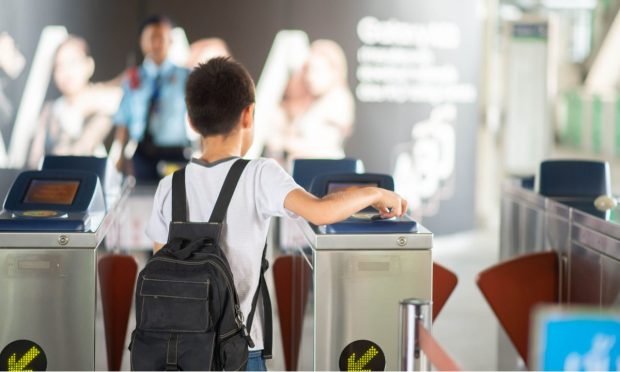Visa Says Riding Mass Transit Has Never Been Easier — but Tap to Ride Uptake Is Limited

We’ve seen the disappearance of the subway tokens.
The tickets — at the bus, on the trains and across mass transit in general — are next.
Nick Mackie, Visa’s global head of urban mobility, told PYMNTS’ Karen Webster that while the future of mobility has autonomous cars, electric scooters and all manner of energy efficient transport modes on the horizon, the transformation right now can be seen in the new ways to pay.
Increasingly, the consumer, emerging from the public health scare of the pandemic, wants to pay in digital ways, eliminating the friction that stands in the way of getting where one wants to go (after all, if you’re fumbling for the right payment method, you miss the bus, literally).
Mobility, in fact, can be likened a bit to commerce itself. We move seamlessly through online and offline channels — actually, only as seamlessly as payments allow. In commerce, Visa has been witnessing a wholesale shift toward contactless payments, and that familiarity is spilling over into all avenues of daily life, including the commute, as we return to the office or finally start taking those leisure trips that we’d put off for so long.
Shopping is interoperable, noted Mackie, and mass transit should be too.
Ideally, the payments should be the experience.
If the agencies build inclusive, modern systems, leveraging real-time data to do so, they’ll grow ridership in the years to come, he said.
The comments came as Visa released its “Future of Urban Mobility” study on Tuesday (July 12), which shows that an overwhelming percentage of respondents — more than 90% — expect public transit to offer contactless payments. Of the more than 11,000 of respondents across Australia, New Zealand and other countries, over half “strongly expect it,” said Mackie.
In meeting those expectations, said Mackie, mass transit may see a boost in ridership. Want to incentivize more trips, more often?
In an inflationary environment such as the one we’re in at the moment: Cap the fares.
Getting the technology in place to serve those shifting consumer expectations is no quick endeavor.
Tough Nut to Crack
“Public and mass transits are a real tough nut to crack,” he said. The payments mechanisms and modalities and flow as people move from one form of transport to get where they need to go are marked by complexities.
But it need not be so.
Transit agencies have a vested interest in making things a bit more streamlined and secure. In fact, Mackie said, transit authorities don’t want to issue tickets at all, because tickets are cost centers. People lose the tickets, or dog ear them, and they don’t feed into the readers properly.
“What we’re solving here,” he said of Visa and other payments firms, “is making it so that tapping the device can be your ticket.”
The agencies and the operators have taken note of the urgency of the overhauls — as Visa said, not a single project get cancelled through the pandemic — even though ridership is still depressed by as much as 10% to 20%, depending on where you look. But the forward-thinking transit operators are poised to capture demand when it rebounds fully; more than 500 agencies are operating on open loop payments, a huge surge from London’s initial open loop forays back in 2012.
Creating the blissful customer experience — or replicating it, with commerce as the guiding light — involves the ongoing work between Visa and 130 partners, and specifically Visa Ready, which helps innovation coalesce around global standards of certification and security.
The payoff can be significant, he said, where 32% of transit riders have said contactless payments are a feature that would entice them to use public transit. Ancillary experiences and apps, such as in the U.K., enhance the journey with real-time push notifications about delays and other aspects of the journey.
“Cities are keen to see people use public transportation more often than ‘private’ means of transportation,” Mackie said. These cities want to broaden people’s ability to reach where they want to go, in order to enjoy a better quality of life. Against that backdrop, the appeal of capped fare stands in stark relief, as students and the unemployed are more likely to use mass transit if fares were capped, according to Visa’s data.
“Agencies are going to have to think more like retailers,” he said, with an eye on price.
Along the way, as contactless payments and apps make mass transit as intuitive as buying a cup of coffee, “we are building some of the foundations that will change the image of transportation and give our cities a real chance of thriving,” Mackie said.
For all PYMNTS EMEA coverage, subscribe to the daily EMEA Newsletter.
